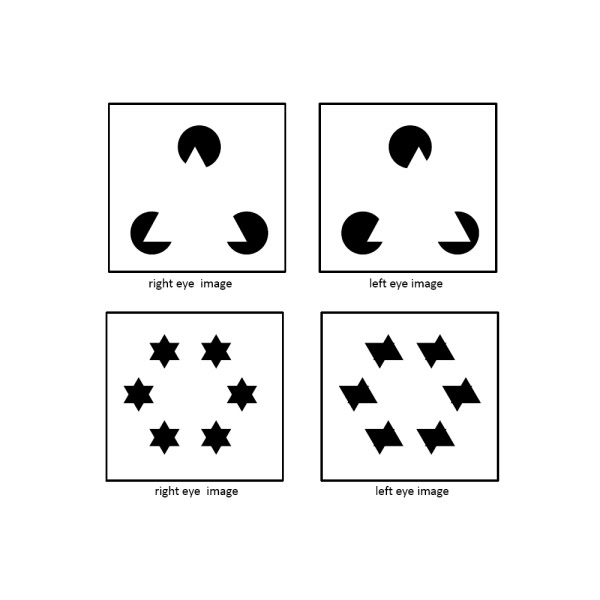The picture is very interesting!
Stereo vision may not match illusory contours and (new) Illusory contours can be formed after stereo matching occurs (second row).
Stereo vision produces new illusory contours.
One of the winner from "6th Annual Best Visual Illusion of the Year".
Design by Davi Geiger & Hiroshi Ishikawa.
The perception of the Kanizsa illusory triangle (first row) is strengthened by stereo matching. Does stereo matching use illusory contours as features for matching? Does stereo matching produces new illusory contours?Stereo vision may not match illusory contours and (new) Illusory contours can be formed after stereo matching occurs (second row).
so,i call it "1+1= 1" lol
I think maybe it is hint something about a new space that could be created by our eyes in this ways? Coooool ? I don't know.. let me keep thinking.
Information got from:
http://illusioncontest.neuralcorrelate.com/cat/top-10-finalists/2009/#post-1064
Information got from:
http://illusioncontest.neuralcorrelate.com/cat/top-10-finalists/2009/#post-1064







